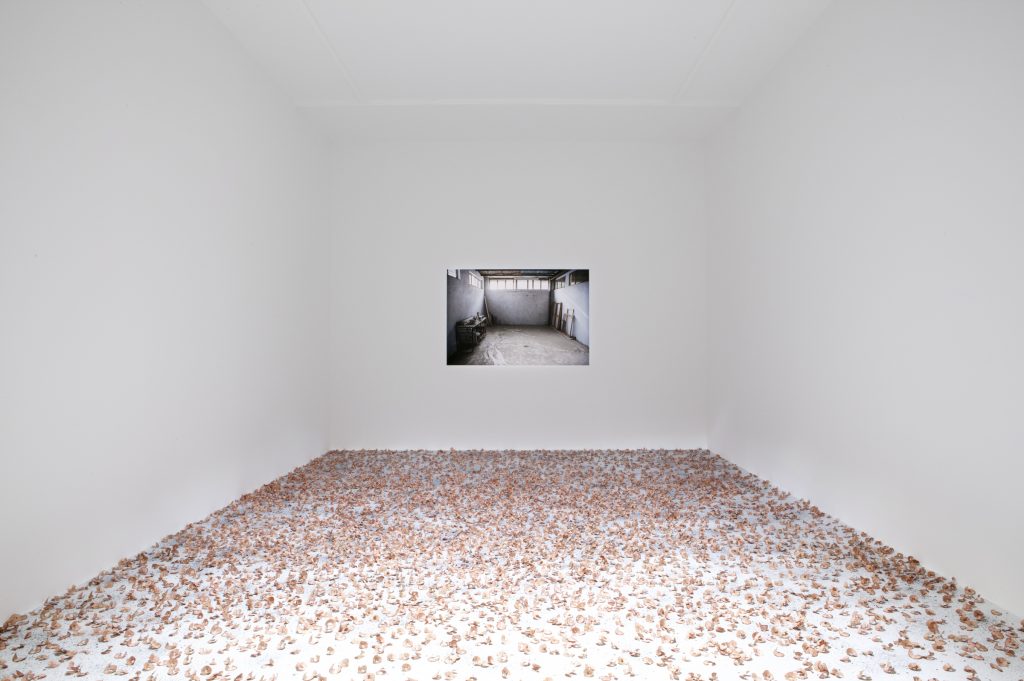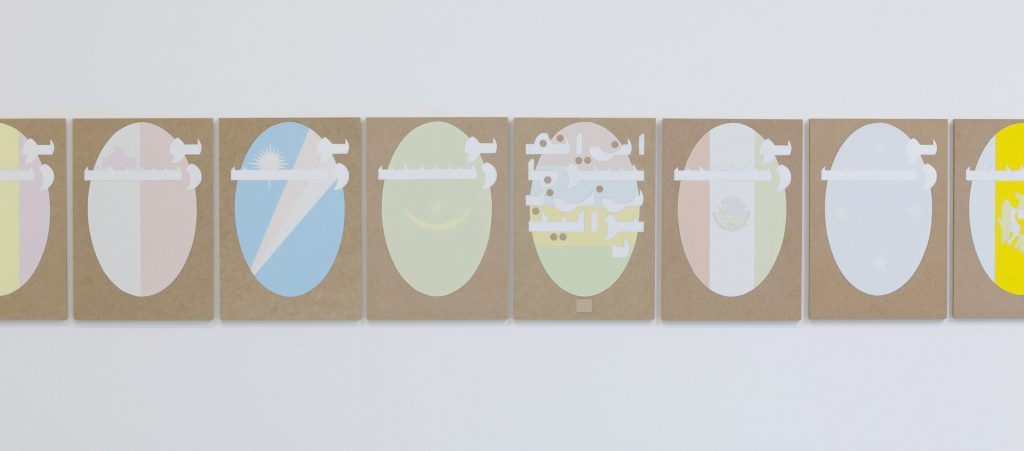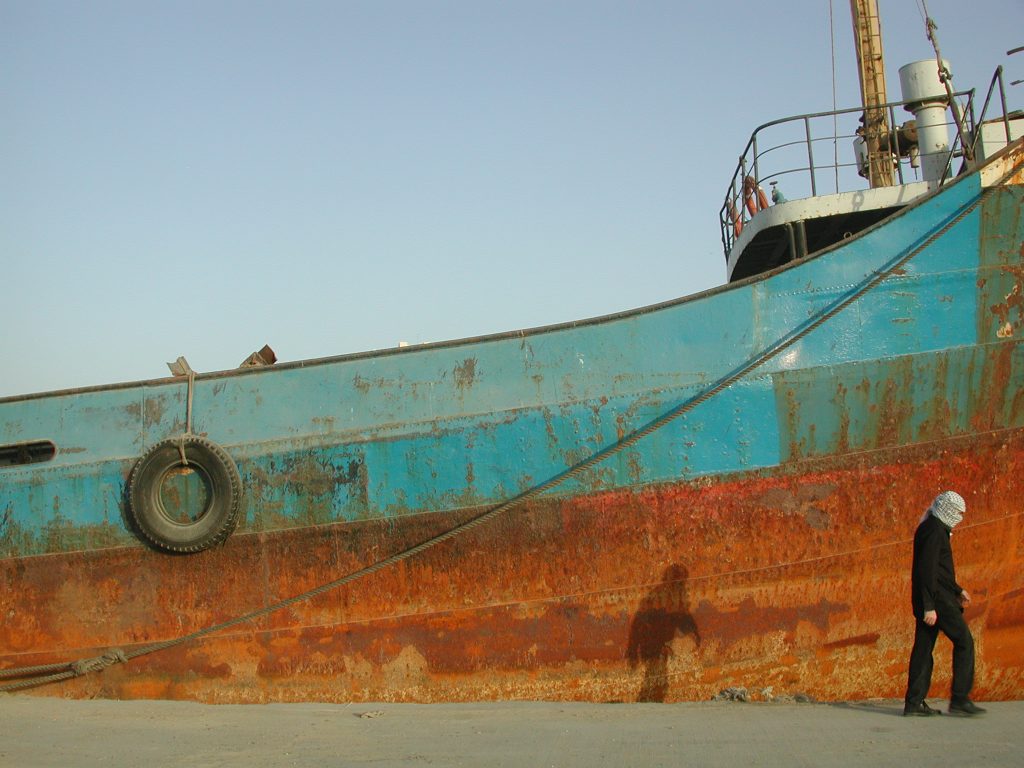Safar/Voyage: Contemporary Works by Arab, Iranian, and Turkish Artists, on display at the Museum of Anthropology until September 15, is a journey about journeys—the external and the internal, the individual and the collective. The exhibition showcases works by 16 artists, curated by Dr. Fereshteh Daftari, former curator at the Museum of Modern Art, and Jill Baird of the Museum of Anthropology.
“I’ve constructed a journey beginning with the world and moving beyond the outside to a more internal viewpoint,” explains Daftari. The first artwork that comes in view is Mona Hatoum’s Hot Spot (2006), a glowing red sphere representing the Earth. It is within reach, but the red neon tubes burn so brightly it also prevents closer investigation. The work portrays the entire planet in a tense state of emergency, with no one spot in better shape than the rest.
Many of us experience voyages simply as vacations. Adel Abidin created his own provocative travel agency with Abidin Travel (2006), which, complete with ticket booths and brochures, advertises impractical holidays to Baghdad. (The work also exists online.) Garish signs and banners on monitors blink with invitations (“Book now”, “Endless opportunities, fun and games”, “Hurry!!! Offer ends soon”), juxtaposed against harrowing images of war. The piece censors nothing, and the real, unstaged photographs and video footage from Baghdad show a grisly reality that is disturbing, unsettling.
Sometimes, leaving home is difficult. Egyptian artist Raafat Ishak’s piece, Responses to an Immigration Request from One Hundred and Ninety Four Governments (2006 – 2009), is a transcription in Arabic of each country’s reply to his formal letters of request, superimposed over the nation’s flag, drained of colour. Ninety-seven countries did not respond to Ishak’s query. The work pits the notion of individual freedom against state-controlled border crossings.
Other times, as in Taysir Baniji’s case, it is not even possible for people to return to their homes once they’ve left. In Hannoun (1972 – 2009), red pencil shavings reminiscent of poppies are scattered across the floor of a room, at the end of which is a photograph of the artist’s studio in Gaza, which he was forced to abandon. Poppies—or, hannoun, in the dialect—are associated with freedom fighters in Palestinian culture, and represent a field that Baniji cannot cross. His longing to return home, here, is an admission of voyage.
Some journeys are intensely personal. Tarek Al-Ghoussein’s series of untitled self portraits show the artist in various locations—by an airplane, a ship, or strolling along a waterfront—wearing a keffiyeh, a traditional Palestinian headdress that has become a symbol of terrorism in many parts of the world, including the Middle East itself. Al-Ghoussein challenges this knee-jerk reaction while depicting his struggle to reconcile individual identity within these landscapes in this simple, yet thought-provoking series.
Parviz Tanavoli takes the viewer back in time with Oh, Persepolis II (1975 – 2008), a dazzling bronze sculpture named after the ceremonial centre of the Achaemenid dynasty, which ruled over the Persian Empire in 550 B.C. The invented ideograms are indicative of the artist’s interest in poetry and the written language, and in remembering Persepolis, Tanavoli also pays homage to Iran’s pre-Islamic past.
With works united in their theme of journeys, be it physical and geographical or emotional and existential, Safar/Voyage is an exploration of individual and collective identity and modernity. Viewers are invited to reflect on some of today’s most important issues, and the exhibition is well worth a visit before it closes Sunday, September 15.













